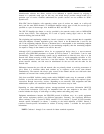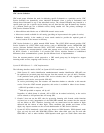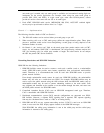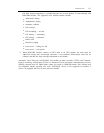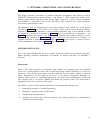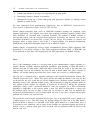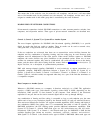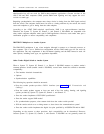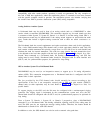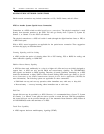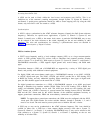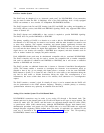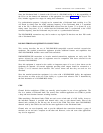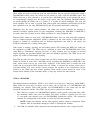
NETWORK CONNECTIONS AND CONFIGURATIONS
2-3
This means that in the exclusive case, the network’s call completes, and the user’s call must either
wait or find another trunk. In the preferred case, the network’s call completes, and the user’s call is
assigned to another trunk in this trunk group that is controlled by the same D-channel.
DS1/DMI PRIVATE-NETWORK CONNECTIONS
Private-network connections include DS1/DMI connections to other customer-premises switches, host
computers, and off-premise stations. These types of private network connections are described next.
Generic 1, Generic 2, System 75, or System 85 to Another System
The most frequent application for DS1/DMI with bit-oriented signaling (DMI-BOS) is to provide
digital tie trunks that link one switch to another. These tie trunks can be used to transmit voice,
voice-grade data, or digital data from one switch to another.
If the two endpoints are colocated, then there are no transmission carrier facilities between the
endpoints and any combination of signaling, framing, and line coding may be used. However, both
endpoints must be administered for the same options. When carrier facilities connect to DS1/DMI
endpoints, the carrier facilities may place limitations on the permitted options. When two or more
switches are connected together, they must be synchronized; one switch must be chosen as the timing
master, and the others must derive timing from this master. Refer to chapter 5, Synchronization of
Digital Facilities, for a description of synchronization procedures.
DMI with message-oriented signaling (DMI-MOS) is used exclusively to support connections to a
compatible computer. DMI-MOS connections between a System 85 to System 85, System 85 to
Generic 1, System 85 to Generic 2, Generic 1 to Generic 1, Generic 1 to Generic 2, or Generic 2 to
Generic 2 (that is, switch-to-switch) are supported when they are a part of the link that terminates on
a compatible computer.
Host Computer to Another System
Whenever a DS1/DMI connects to a computer, it functions exclusively as a DMI. This application
requires a DMI trunk type, 24th-channel signaling (either BOS or MOS, depending on the
installation). DMI provides 23 data channels to the computer. Each channel is the functional
equivalent of one port that can be used to transmit digital data at rates up through 64K-bps.
Any combination of framing and line coding is acceptable as long as each endpoint uses the same
options and as long as any restrictions placed by the network facility (if used) are satisfied. However,
when end-to-end transmission facilities will support extended superframe (ESF) framing and bipolar 8
zero substitution (B8ZS) line coding, then it is recommended that either or both be selected. For
DMI-MOS applications, the ESF framing option provides additional maintenance capabilities. With
System 85 or Generic 2, allowed DMI trunk types are 108 (wink-in/auto-out) and 109 (wink-
in/wink-out). With System 75 or Generic 1, the allowed trunk type for DMI-BOS is DMI and the
available signaling types (in/out) are auto/auto, auto/immed, auto/wink, wink/auto, and wink/wink.
With System 75 or Generic 1, the allowed service type for ISDN is DMI-MOS. Other trunk types are



